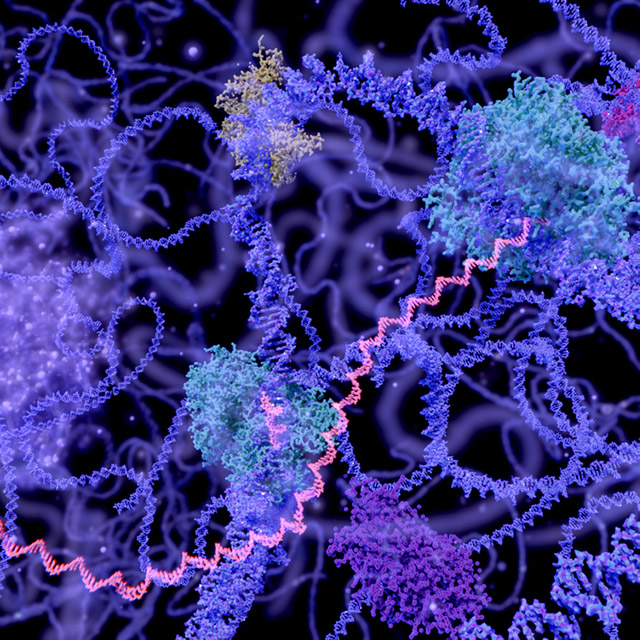Simultaneous identification of RNA-chromatin interactions and transcriptomes in single cells
 Aim
Aim
Epigenetic heterogeneity in cancer can drive tumour evolution and adaptive drug resistance. We previously demonstrated that lncRNA-chromatin interactions can be identified at ultra-high sensitivity by tethering the adenine methylase Dam to MS2-tagged chromatin-associated lncRNAs in Drosophila. Recently, the transcriptomes and chromatin-occupancy of Dam fusion proteins were simultaneously determined in single cells (scDamlD&T, Rooijers et al., 2019). In this project we will develop a protocol for single-cell identification of RNA-chromatin associations and their transcriptomic effects in single mammalian cells.
Brief project outline
We have recently developed a system to map RNA-chromatin interactions. We will now adapt this approach to enable single-cell resolution in mammalian cells. The protocol, plasmids and cell lines will be disseminated throughout UQ allowing the establishment of a reproducible platform for single cell analyses of chromatin interactions. This research programme will integrate the DamlD and single-cell genomics expertise at MRI-UQ and the Translational Research Institute into the GIH.
Genomics-based innovative aspect of proposal
Current approaches for understanding the mechanisms of action of chromatin-associated RNAs are limited by low sensitivity. The innovative approach of this project takes advantage of breakthroughs in single cell DamlD. We will enable interrogation of RNA-chromatin interactions and determination of the transcriptomic effects of these interactions in the same cell. This project would take advantage of existing expertise and build capacity in single cell techniques and next generation sequencing at GIH. Our collaborative research programme will enable understanding of the mechanistic basis of gene expression heterogeneity in single cells.
Broad applicability of the technique
This approach and the protocols developed herein will be of broad use any research groups focused on the regulation of gene expression by RNA and protein complexes. The single cell Dam ID protocol will be available at the IMB sequencing facility. Dr Cheetham will train a GIH staff member to independently perform the approach.
Publications and pre-prints supported by this project
Long-read cDNA sequencing identifies functional pseudogenes in the human transcriptome (https://doi.org/10.1186/s13059-021-02369-0)
Nanopore Sequencing Enables Comprehensive Transposable Element Epigenomic Profiling (https://doi.org/10.1016/j.molcel.2020.10.024)
Preprint: Methylartist: Tools for Visualising Modified Bases from Nanopore Sequence Data (https://doi.org/10.1101/2021.07.22.453313)
Preprint: Single-molecule simultaneous profiling of DNA methylation and DNA-protein interactions with Nanopore-DamID (https://doi.org/10.1101/2021.08.09.455753)







